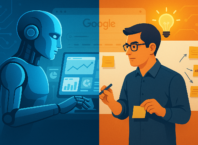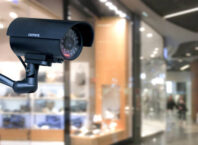The evolving role of motion graphics animation in emerging technologies such as artificial intelligence, machine learning, and mixed reality.
Motion graphics animation is evolving and expanding its role in conjunction with emerging technologies such as artificial intelligence (AI), machine learning (ML), and mixed reality (MR). These technologies are reshaping the possibilities and applications of motion graphics animation, opening up new avenues for creative expression and user experiences. Here’s a glimpse of the evolving role of motion graphics animation in these emerging technologies:
1. Artificial Intelligence (AI): Motion graphics animation intersects with AI in various ways, enabling enhanced automation, personalization, and dynamic content generation. AI algorithms can be used to automate certain aspects of motion graphics animation, such as generating animations based on data inputs or creating dynamic variations of animations for personalized experiences. AI can also analyze viewer behavior and preferences to optimize animations in real-time, delivering tailored content to individual users.
2. Machine Learning (ML): Machine learning techniques can be integrated with motion graphics animation to create more intelligent and interactive experiences. ML algorithms can analyze user interactions and behaviors within animations to provide personalized recommendations or adaptive storytelling. ML also enables motion graphics animation to learn from user feedback and adapt its visual style, pacing, or content based on user preferences, creating a more engaging and customized experience.
3. Mixed Reality (MR): Mixed reality combines the real world with virtual elements, creating immersive and interactive experiences. Motion graphics animation plays a crucial role in enhancing the visual elements of mixed reality. It enables the creation of animated virtual objects, characters, or effects that seamlessly integrate into the real-world environment. Motion graphics animation in MR enhances storytelling, guides user interactions, and enhances the overall immersive experience, blurring the boundaries between the physical and virtual worlds.
4. Data Visualization and Infographics: Motion graphics animation in conjunction with AI and ML techniques can provide advanced data visualization and infographics. By incorporating AI-powered data analysis and ML algorithms, motion graphics animation can transform complex data sets into visually engaging and interactive animations. This combination enables more intuitive and interactive exploration of data, making it easier for users to understand and interpret complex information.
5. Interactive Experiences: Emerging technologies, including AI, ML, and MR, are transforming motion graphics animation into interactive experiences. Motion graphics animation can respond to user input, allowing users to interact with the animated elements, change perspectives, or influence the narrative. Through interactive motion graphics animation, users become active participants, shaping their own experiences and deepening their engagement with the content.
6. Immersive Advertising and Branding: Motion graphics animation in emerging technologies opens up new possibilities for immersive advertising and branding experiences. By integrating motion graphics animation with AI-powered ad targeting, ML-driven personalization, and MR environments, brands can create interactive and personalized advertising experiences that captivate and engage users. These immersive experiences enable brands to communicate their messages more effectively and create a memorable impact.
As motion graphics animation continues to evolve, its integration with emerging technologies like AI, ML, and MR is transforming the possibilities for creative expression, interactivity, personalization, and immersive experiences. These advancements open up exciting opportunities for motion graphics animation to play a more integral role in shaping the future of storytelling, user experiences, and brand engagement.
The integration of motion graphics animation in interactive and immersive experiences, such as interactive storytelling and gamification.
Motion graphics animation plays a significant role in enhancing interactive and immersive experiences, such as interactive storytelling and gamification. By incorporating motion graphics animation into these experiences, creators can engage users on a deeper level, foster active participation, and create memorable and engaging interactions. Here’s how motion graphics animation enhances interactive storytelling and gamification:
1. Engaging Visual Narratives: Motion graphics animation brings visual narratives to life, capturing users’ attention and immersing them in the story. By using animated characters, dynamic environments, and visual effects, motion graphics and animation enhances the storytelling experience. Users can follow the story visually, creating a more engaging and immersive narrative experience.
2. Interactive Elements and Decision-Making: Motion graphics animation allows for interactive elements within the experience, enabling users to make decisions and influence the storyline. Users can interact with animated objects, characters, or environments, triggering specific animations or branching narratives based on their choices. This interactivity empowers users, making them active participants in the storytelling process and enhancing their engagement and immersion.
3. Gamification and Rewards: Motion graphics animation adds a gamified element to interactive experiences. By incorporating animated progress bars, badges, or rewards, motion graphics animation motivates users to progress and achieve goals. Gamification elements within the animation can encourage users to explore further, complete challenges, or unlock additional content, enhancing their motivation and enjoyment.
4. Visual Feedback and Responsiveness: Motion graphics animation provides visual feedback and responsiveness to user actions. By animating responses to user input, such as animated button clicks, transitions, or visual cues, motion graphics animation enhances the user experience and creates a sense of interactivity and immersion. Visual feedback reinforces the connection between user actions and the corresponding changes within the animation, making the experience more dynamic and engaging.
5. Simulations and Virtual Environments: Motion graphics animation can create simulations and virtual environments that allow users to explore and interact with animated elements. Whether it’s a virtual tour, interactive educational content, or a simulated scenario, motion graphics animation enhances the realism and interactivity of the experience. Users can navigate through animated environments, interact with objects, and learn or engage with the content in an immersive and visually stimulating way.
6. User Feedback and Progress Tracking: Motion graphics animation can incorporate user feedback and progress tracking mechanisms. Animated progress indicators, visual cues, or animated notifications can provide real-time feedback to users, helping them track their progress, achievements, or completion of tasks. This feedback enhances the user experience by providing a sense of accomplishment and reinforcing their engagement with the interactive content.
7. Emotional Engagement and Impact: Motion graphics animation evokes emotions and enhances the impact of interactive experiences. Through expressive animations, visual storytelling techniques, and dynamic visuals, motion graphics animation elicits emotional responses from users, deepening their connection with the content and making the experience more memorable.
By integrating motion graphics animation into interactive storytelling and gamification, creators can elevate the user experience, foster engagement, and create immersive and memorable interactions. The visual appeal, interactivity, and emotional engagement provided by motion graphics animation enhance the overall impact of these experiences, making them more compelling, enjoyable, and effective in capturing users’ attention and leaving a lasting impression.
The potential of motion graphics animation in virtual influencers and digital avatars.
Motion graphics animation has immense potential in the realm of virtual influencers and digital avatars. With the advancements in technology and the rise of social media, virtual influencers and digital avatars have become popular channels for brand communication and entertainment. Motion graphics animation plays a crucial role in bringing these virtual entities to life and creating engaging and interactive experiences. Here’s how motion graphics animation can unleash its potential in virtual influencers and digital avatars:
1. Visual Realism and Expressiveness: Motion graphics animation can create virtual influencers and digital avatars with stunning visual realism and expressiveness. Through meticulous character design, realistic animations, and lifelike facial expressions, motion graphics animation enables virtual influencers and avatars to convey emotions, engage with the audience, and build connections. The fluid movements and detailed animations make these virtual entities more relatable and captivating, enhancing their overall appeal.
2. Interactive and Dynamic Content: Motion graphics animation allows virtual influencers and digital avatars to engage with the audience in interactive and dynamic ways. Through animations, these virtual entities can respond to user interactions, answer questions, perform actions, or even participate in real-time events. Motion graphics animation provides the flexibility to create engaging and interactive content that captures the attention of the audience and encourages their active participation.
3. Customization and Personalization: Motion graphics animation enables the customization and personalization of virtual influencers and digital avatars. Through animation, these virtual entities can adapt their appearance, outfits, and even behavior to match the preferences of individual users. Motion graphics animation allows for real-time adjustments and modifications, providing a unique and personalized experience for each viewer. This customization fosters a sense of connection and loyalty among the audience.
4. Brand Representation and Storytelling: Motion graphics animation allows virtual influencers and digital avatars to effectively represent brands and convey brand stories. Through animations, these virtual entities can incorporate brand elements, such as logos, colors, and messaging, into their content. Motion graphics animation enhances the storytelling capabilities of virtual influencers and avatars, enabling them to communicate brand values, share narratives, and create memorable experiences that resonate with the audience.
5. Multilingual and Global Reach: Motion graphics animation facilitates multilingual communication and global reach for virtual influencers and digital avatars. By using animated visuals, subtitles, or voice-overs, these virtual entities can effectively communicate with audiences across different languages and cultural backgrounds. Motion graphics animation breaks language barriers, enabling virtual influencers and avatars to connect with a broader audience and expand their reach worldwide.
6. Scalability and Efficiency: Motion graphics animation offers scalability and efficiency in creating content for virtual influencers and digital avatars. Once the initial animation assets are created, they can be reused, modified, or combined to produce new content quickly and cost-effectively. Motion graphics animation allows for efficient content creation, ensuring a steady stream of engaging and visually appealing content for virtual influencers and avatars.
7. Adaptability to Emerging Technologies: Motion graphics animation can adapt to emerging technologies, enabling virtual influencers and digital avatars to explore new platforms and mediums. As technologies like augmented reality (AR) and virtual reality (VR) continue to evolve, motion graphics animation can seamlessly integrate with these environments, creating immersive and interactive experiences. This adaptability opens up new possibilities for virtual influencers and avatars to engage with their audience in innovative ways.
Motion graphics animation has the potential to revolutionize the capabilities of virtual influencers and digital avatars. Through its visual realism, interactivity, personalization, brand representation, and adaptability to emerging technologies, motion graphics animation enhances the engagement, entertainment, and communication potential of these virtual entities, forging deeper connections with audiences and providing unique experiences that captivate and inspire.
The influence of social media platforms and short-form content on the future of motion graphics animation.
Social media platforms and the rise of short-form content have had a profound influence on the future of motion graphics animation. These platforms, such as Instagram, TikTok, and Snapchat, have transformed the way content is consumed, shared, and created, shaping the evolution of motion graphics animation in several ways:
1. Bite-Sized Content: Social media platforms thrive on short-form content that captures attention quickly. Motion graphics animation has adapted to this trend by creating concise and impactful animations that deliver messages effectively in a short span of time. Animations optimized for social media platforms are often designed to engage viewers within the first few seconds and convey information efficiently. This shift towards bite-sized content has fueled the development of more visually compelling and concise motion graphics animations.
2. Storytelling in Seconds: With the limited attention span of social media users, motion graphics animation has embraced the challenge of telling stories within seconds. Animators leverage techniques such as quick cuts, dynamic transitions, and visual metaphors to convey narratives effectively in a short timeframe. Motion graphics animations on social media platforms often focus on creating an emotional impact or delivering a memorable message, making storytelling concise yet impactful.
3. Visual Appeal and Thumb-Stopping Content: Motion graphics animation aims to create visually captivating content that grabs attention as users scroll through their social media feeds. With the increasing competition for attention, animations need to be visually appealing, unique, and thumb-stopping. Animators use vibrant colors, eye-catching designs, and visually stimulating effects to make motion graphics animations stand out in a crowded digital landscape, increasing the chances of users stopping to watch and engage with the content.
4. Seamless Looping and Repetition: Social media platforms often auto-play content, and animations designed for these platforms take advantage of this feature. Motion graphics animations are often designed to loop seamlessly, allowing them to be viewed repeatedly without interruption. This looping effect increases brand exposure, message retention, and encourages users to watch the animation multiple times, enhancing brand recognition and recall.
5. User Interaction and Engagement: Social media platforms provide opportunities for users to interact with motion graphics animations through likes, comments, shares, and other engagement features. Animators leverage these interactive elements to create animations that encourage user participation, such as polls, quizzes, or challenges. Motion graphics animations with interactive components foster a sense of engagement and create a more immersive experience for users.
6. Adaptation to Platform Requirements: Different social media platforms have specific requirements and formats for motion graphics animations. Animators must adapt their creations to fit within these constraints, ensuring optimal playback and viewing experience. They consider factors such as aspect ratios, file sizes, and duration limits to optimize the animation for each platform, ensuring that it appears as intended and reaches the desired audience.
7. Viral Potential and Shareability: Short-form motion graphics animations have the potential to go viral and be widely shared across social media platforms. Engaging animations with a strong emotional impact, relatable content, or unique concepts can quickly gain traction and reach a vast audience. The shareability of motion graphics animations on social media contributes to increased brand exposure, brand advocacy, and the potential for content to become a viral sensation.
In summary, social media platforms and the demand for short-form content have reshaped the future of motion graphics animation. Animators are adapting to the challenges and opportunities presented by these platforms by creating bite-sized content, delivering concise storytelling, emphasizing visual appeal, leveraging looping effects, encouraging user interaction, adapting to platform requirements, and capitalizing on the viral potential of animations. As social media continues to evolve, motion graphics animation will likely continue to adapt and innovate to engage audiences effectively in the ever-changing digital landscape.
The role of motion graphics animation in enhancing user experience in the age of digital transformation.
Motion graphics animation plays a crucial role in enhancing user experience (UX) in the age of digital transformation. As technology continues to evolve and digital interactions become more prevalent, motion graphics animation adds value by creating visually engaging, interactive, and intuitive experiences. Here’s how motion graphics animation enhances UX in the age of digital transformation:
1. Visual Appeal and Engagement: Motion graphics animation captures attention and engages users with visually appealing and dynamic content. It enhances the overall aesthetics of digital interfaces, websites, and applications, making them more inviting and enjoyable to interact with. Animations create a sense of delight, piquing users’ curiosity and encouraging them to explore further.
2. Information Communication and Understanding: Motion graphics animation facilitates effective communication of complex information and concepts. By using visual storytelling, animated graphics, and motion effects, motion graphics animations simplify complex ideas and make them easier to understand. They enable the seamless flow of information, guiding users through processes, providing visual cues, and enhancing comprehension.
3. User Guidance and Feedback: Motion graphics animation guides users through digital experiences by providing intuitive and interactive visual cues. Animations can direct users’ attention to important elements, highlight changes, or provide feedback on interactions. This guidance enhances usability, reduces confusion, and empowers users to navigate digital interfaces with ease.
4. Micro-interactions and Transitions: Motion graphics animation adds fluidity to micro-interactions and transitions within digital experiences. Microinteractions are small animations or visual feedback that occur during user interactions, such as button presses or form submissions. These subtle animations make interactions more responsive, providing instant feedback and creating a sense of seamlessness in the user journey.
5. Visual Hierarchy and Prioritization: Motion graphics animation aids in establishing visual hierarchy and prioritizing content. By incorporating animated elements, motion effects, and transitions, motion graphics animation helps users understand the importance and relationships between different elements on a screen. It guides users’ attention and enables them to focus on key information, making the overall experience more intuitive and user-friendly.
6. Emotional Connection and Branding: Motion graphics animation creates an emotional connection between users and digital experiences. Through the use of expressive visuals, dynamic characters, and engaging narratives, animations evoke emotions and forge a deeper connection with users. They also enable brands to convey their unique personality, values, and brand identity, fostering a sense of familiarity and loyalty.
7. Responsive and Adaptive Design: Motion graphics animation adapts to different devices and screen sizes, enhancing the responsiveness of digital experiences. Animations can be optimized for various platforms, ensuring a consistent and visually appealing experience across desktops, smartphones, and tablets. Adaptive design techniques enable animations to scale and adjust dynamically, providing a seamless experience across different devices.
8. Interactive and Gamified Experiences: Motion graphics animation adds interactivity and gamification elements to digital experiences, enhancing engagement and enjoyment. By incorporating interactive animations, users can actively participate in the experience, complete challenges, or achieve rewards. Gamification elements within motion graphics animations create a sense of achievement, motivate users, and increase user engagement and retention.
In the age of digital transformation, motion graphics animation elevates user experience by enhancing visual appeal, simplifying information communication, providing user guidance and feedback, adding fluidity to interactions and transitions, establishing visual hierarchy, fostering emotional connection and branding, enabling responsive design, and creating interactive and gamified experiences. By leveraging the power of motion and animation, organizations can create memorable and engaging digital experiences that leave a lasting positive impact on users.

















































































